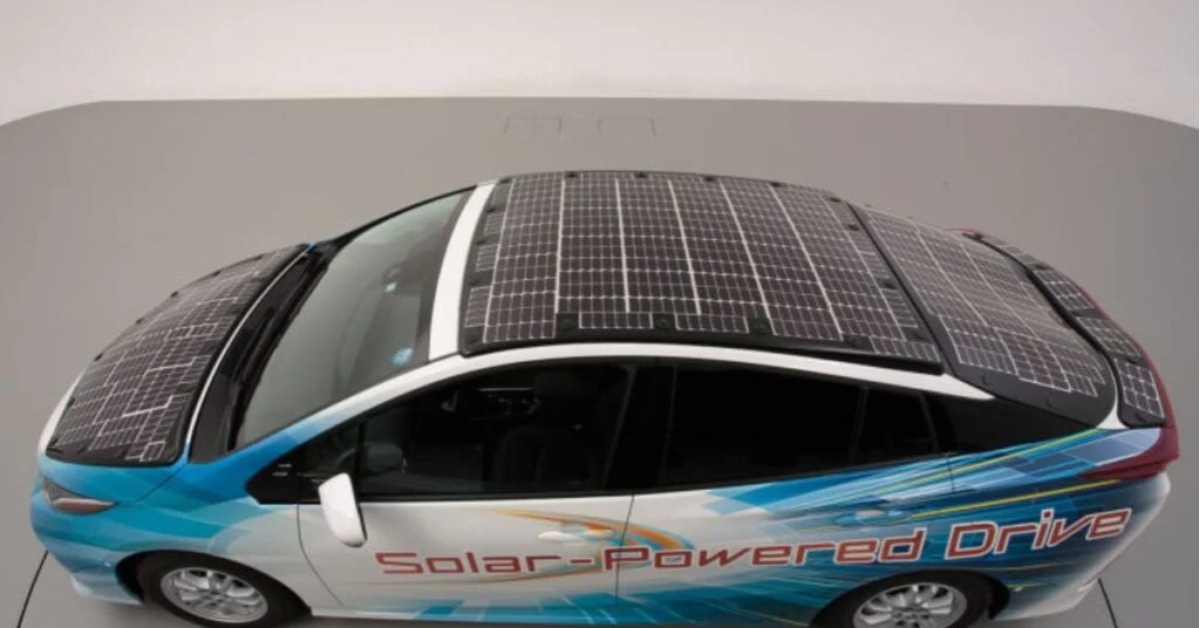The Indian automobile industry is at the forefront of a green revolution, and the latest innovation pushing this change is the revolutionary solar car. With an impressive 380 km driving range, a top speed of 120 km/h, and an affordable price tag, this car represents a giant leap forward in sustainable mobility.
As India struggles with rising fuel costs, increasing pollution, and growing demand for clean energy solutions, the introduction of a solar-powered vehicle could be the game-changer that millions have been waiting for. Let’s explore everything about this futuristic solar car, its design, features, performance, and the potential it holds for India’s mobility landscape.
Why a Solar Car for India?
India is blessed with abundant sunlight, making it an ideal market for solar-powered mobility. On average, the country receives 300 sunny days a year, which provides more than enough energy to power a vehicle.
The introduction of a solar car offers solutions to multiple challenges:
- Reduces Fuel Dependence – Minimizing reliance on petrol and diesel.
- Eco-Friendly Mobility – Zero emissions make it a sustainable option.
- Lower Running Costs – Free solar energy reduces operating expenses significantly.
- Energy Independence – A step toward Atmanirbhar Bharat in green energy and mobility.
Design & Build
The solar car has been designed keeping both efficiency and style in mind.
- Aerodynamic Shape – Reduces drag, improves speed, and maximizes efficiency.
- Integrated Solar Panels – Panels fitted on the roof and bonnet to absorb maximum sunlight.
- Lightweight Body – Built with strong but light materials to enhance performance.
- Modern Styling – Sleek lines and futuristic design to attract young buyers.
Unlike traditional electric cars, the solar car recharges itself when parked outdoors, giving it a unique edge in practicality.
Performance Highlights
The solar car is not just eco-friendly but also performance-oriented:
- Top Speed: 120 km/h – making it highway-ready.
- Range: 380 km on a single charge with combined solar and battery backup.
- Charging Options: Dual charging (solar + conventional EV charging station).
- Acceleration: Smooth and responsive, ideal for city and long-distance travel.
With these features, the car proves that green mobility does not have to compromise on performance.
Technology & Features
The solar car comes equipped with a blend of futuristic and practical features:
- Smart Solar Charging System – Automatically adjusts panel angles for maximum sunlight absorption.
- Lithium-Ion Battery Pack – Stores excess energy for night or cloudy-day driving.
- Regenerative Braking – Converts braking energy back into stored power.
- Connected Car Tech – GPS navigation, mobile app control, and real-time solar efficiency tracking.
- Digital Infotainment Cluster – With Android Auto, Apple CarPlay, and voice commands.
These features make the car not just sustainable but also modern and connected.
Safety Features
Safety remains a top priority in the solar car’s design:
- Dual Airbags – For driver and passenger safety.
- ABS with EBD – Ensures stability and control during sudden braking.
- Strong Body Frame – Designed to absorb impact and protect occupants.
- Rear Parking Camera & Sensors – For safe maneuvering in urban areas.
- ISOFIX Child Seat Anchors – Catering to families.
The car proves that eco-friendly innovation and passenger safety can go hand in hand.
Affordability & Pricing
One of the most exciting aspects of this solar car is its affordable pricing. Unlike premium EVs that remain out of reach for most Indian buyers, this solar car is expected to be priced around ₹9–12 lakh (ex-showroom).
Considering the savings on fuel and lower maintenance costs, the solar car can prove to be a cost-effective investment for urban as well as rural buyers.
Impact on Indian Mobility
The launch of this solar car could have far-reaching effects on India’s mobility sector:
- Encouraging Green Adoption – More people may shift from fuel-based to renewable-powered vehicles.
- Rural Reach – With limited charging infrastructure, solar mobility can serve villages effectively.
- Government Push – Fits into India’s EV adoption roadmap and renewable energy mission.
- Reduced Pollution – Helps combat rising urban air pollution levels.
- Boost to Solar Industry – Encourages growth in solar panel manufacturing and jobs.
This solar car could redefine how India looks at affordable, eco-friendly transportation.
Competition & Market Position
While India has seen EV launches from Tata, MG, Hyundai, and Mahindra, a solar car is a unique offering. Its closest competition may be:
- Tata Nexon EV – Affordable electric SUV with good range.
- MG Comet EV – Budget-friendly compact electric car.
- Mahindra XUV400 EV – Strong performance with long range.
However, none of these cars can self-charge using solar power, giving the solar car a major advantage.
Challenges Ahead
While the solar car is revolutionary, it will face some challenges in the Indian market:
- Initial Infrastructure – Lack of awareness and service networks for solar-powered cars.
- Weather Dependence – Cloudy and rainy days may reduce efficiency.
- Consumer Awareness – Buyers need to be educated about solar benefits.
- Scaling Production – Affordable pricing requires large-scale manufacturing.
If these hurdles are addressed, the solar car could become a mainstream success.
Final Thoughts
The revolutionary solar car in India marks a turning point in sustainable mobility. With its 380 km range, 120 km/h speed, futuristic features, and affordable pricing, it could democratize green transportation like never before.
In a country where scooters like the Honda Activa and cars like the Tata Nexon EV have already made history, the solar car could well be the next big disruptor.
It’s not just a vehicle—it’s a symbol of India’s journey toward a cleaner, greener, and more affordable future.



